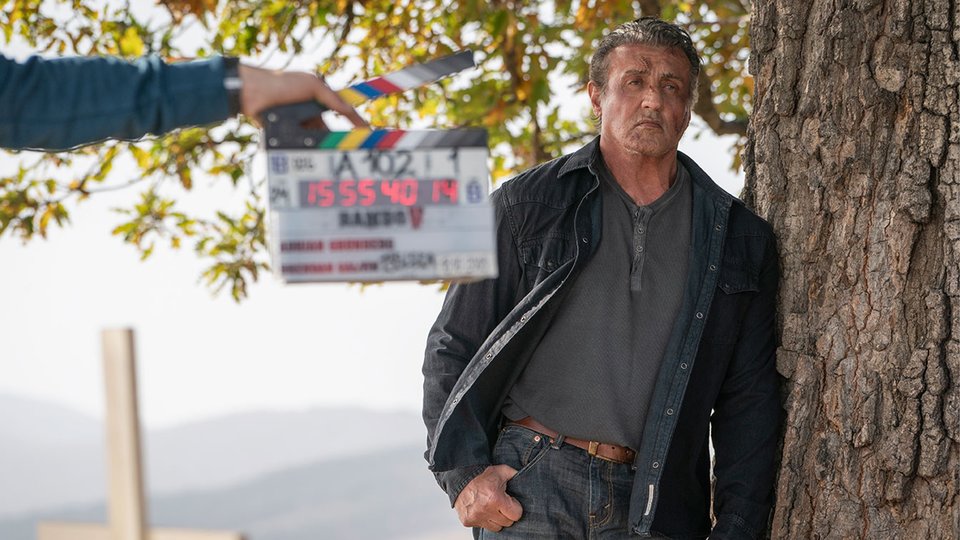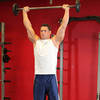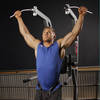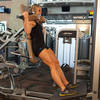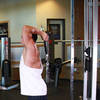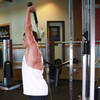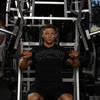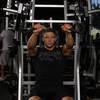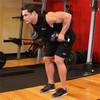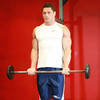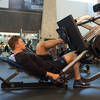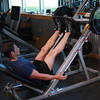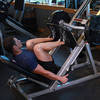Products You May Like
Gunnar Peterson says it feels like he has been training Sylvester Stallone “since the beginning of time.” Filmgoers may feel like they’ve known the actor equally long. His two iconic characters, Rocky Balboa and John Rambo, have personified The Underdog and The Outsider for decades. And now, Rambo makes what would appear to be his final stand in “Rambo: Last Blood,” hitting movie theaters on September 20.
To hear Peterson tell it, Stallone’s greatest character is himself.
“Hands down, Sly is the most entertaining person I’ve ever met,” says the Beverly Hills-based trainer to the stars, speaking by phone on his afternoon drive back from training the Los Angeles Lakers. Peterson says if you’re expecting the gruff, monosyllabic Balboa when you meet Stallone, you’re in for a surprise. “He’s ridiculously smart and an unbelievable wordsmith.”
To wit, Stallone is the only person, besides Orson Welles and Charlie Chaplin, to win Oscar nominations for Best Original Screenplay and Best Actor for the same film.
One trait Stallone shares with his on-screen characters, though, is a tremendous physicality, forged over the decades by hitting the weights and hitting them hard. Curious about how a 73-year-old would prepare to portray John Rambo in his final incarnation, I interviewed Peterson to glean his insights.
When training for the earlier Rambo movies, Sly’s goal was to be as jacked as possible, I assume. Was this time different?
With training, when people don’t have a deadline or an event to train for, they have to create their own goal. I do it for myself. Sly has managed over six decades to constantly dangle the carrot in front of himself, whether that’s for creating a new character or bringing back an old character. Remember how many franchises this man has had—not to mention the ones that should have been franchises, but for whatever reason, didn’t turn into one.
He’s bringing back an iconic character here, so should the character be such a departure from the original? Did that character undergo something that made him completely change and that would change how he looks? How he moves? Or, is it just that he kept getting better? If you watch the Rocky series, he gets better and better until he peaks in IV (1985). It changes in V (1990). In “Rocky Balboa” (2006), which I trained him for, he brought back a different character. He was supposed to be 57 in that film, and he wanted to be thicker, denser, and with more mature muscle. He wanted to exert “blunt force trauma”—that was the quote from the movie. He wanted to be so strong that when Rocky hit his opponent, it just obliterated him.
If you look at the Rambo movies, he looked like a cover model for “First Blood” (1982). Not to mention the agility, the mobility, how he could move within his environment in the forest, in the mine shaft—all that stuff. Everybody wanted to be that guy. That’s why “Rambo” is not only a proper noun, but it became a verb.
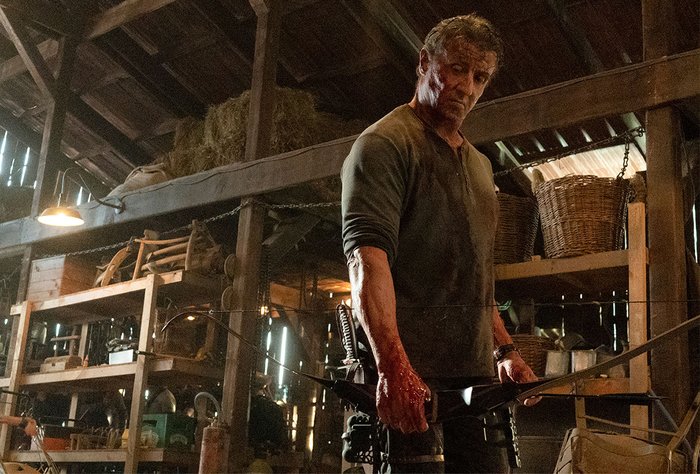
Did Sly come to you this time with a vision for John Rambo and how he felt he needed to train to achieve that?
Because I work with the Lakers now, I’m not there in the morning hours when Sly trains. So more recently he has trained at my facility with Brad Siskind. Brad and Sly always have a vision. There are certain things he wants to pop—he wants to make sure he can still move and be agile enough that you remember the military history of John Rambo. This guy is a serious soldier, so you have to maintain that.
But at the same time, I would imagine John Rambo doesn’t approach training from the standpoint of vanity. He trains for performance and strength out of necessity. So, there is going to be grip training and lifting a lot of different objects, whether they be wheelbarrows, rocks, or logs. It’s going to involve upper-back strength, trap strength—all those things that are signatures of Sly’s characters for almost everything except for “Cop Land” (1997) and “Spy Kids 3-D” (2003).
How much has his training changed due to the fact that he’s now in his 70s?
It’s still the same in that it’s fundamentals. It’s planes of motion. It’s movement and it’s working around, never through, the injuries. And some of those injuries happened years ago. You can imagine a guy doing that many fight scenes and action films and being around that many explosions, that many cars and motorcycles and horses. With some of those injuries, you recover enough to maybe finish the movie, but then later that area becomes nagging.
He likes to say, “At some point, the check comes due,” which applies equally to karma and injuries.
An obvious connection links Sly and boxing. Is that still a part of his training?
I don’t do boxing training with him. Over the years, I’ve worked with a number of elite boxers, from Mike Tyson to Antonio Tarver, but I did their strength and conditioning. So, for me to bring out the mitts for Sly would be kind of insulting to him. When it’s time for that type of film, he definitely goes into that type of training. It’s not by accident that he’s as adept in the ring as he is.
What can you tell me about his current approach to nutrition?
I’m not directly involved in his nutrition, but Sly is pretty intuitive with that, and he knows what he is doing. But he also indulges when he wants. He’s not a monk. If he is going to have a cheat meal, he’s going to have a cheat meal. You can bank on that.
I would think his recovery would have to be a bit more extensive and important than what it was, say, 20 years ago. Do you talk about that, or is he on his own after the workout?
He’s on his own. I know he understands the importance of sleep. He also has other pursuits that are relaxing to him. Obviously, he is a writer, and who knows if that’s relaxing or stress-inducing for him, given that he is such a perfectionist and has to come up with so many scenarios—he might have to write five different endings for a film. He’s also an accomplished painter who’s had exhibits in Europe and Russia. I have one of his paintings hanging in my living room.
That kind of stuff goes a long way, in my experience, in terms of recovery. He’s also a family man who’s very involved in his kids’ lives.
How excited is Sly about “Last Blood”? This has to be an important film for him, bringing closure to an iconic character.
A couple of years ago, he told me that when he reads scripts or writes a script or considers doing something now, he looks at it like, “Can I give a year of my life to this? Do I want to give a year of my life to this?” Because he gets so invested in projects. Not just in his character, but in the whole process.
This is a guy who’s writing and rewriting, and even if he’s not directing, he’s definitely going to weigh in on that aspect, too. And as a director, wouldn’t you want him to? The guy has so much experience. I’d be like, “Anything you’re thinking, I want to hear.”
Not only that, he goes into editing. He goes into music. He’s involved in the whole thing. I wouldn’t say it consumes him, as that denotes a lack of balance—and he’s definitely balanced—but he embodies the whole project.
The fact that this is called “Last Blood”—what a great name. It’s very well thought through. It’s great. I would expect nothing less from Sly.
